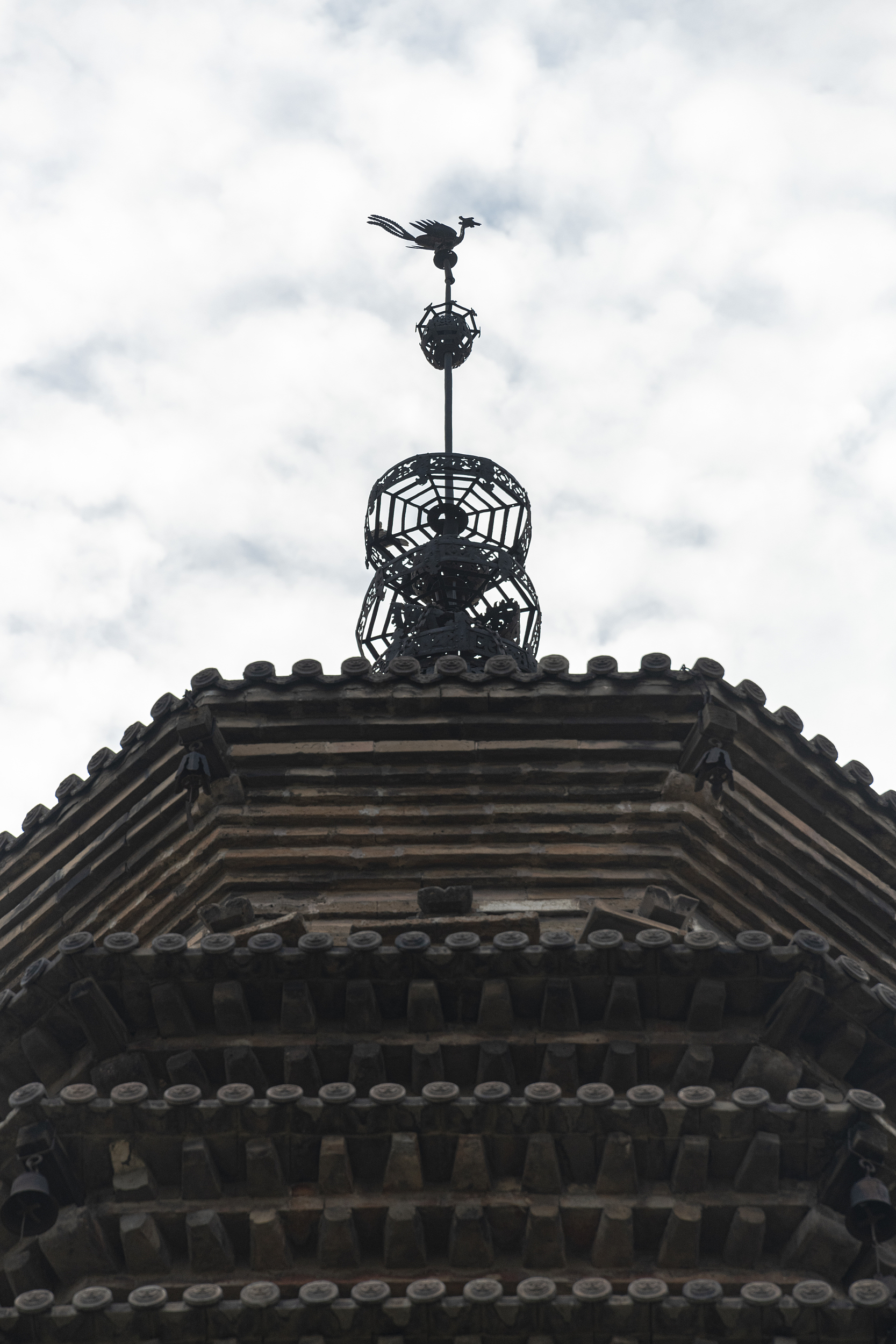Copper Bird: The Oldest Weather Vane

The copper bird on top of the tower in Yuanjue Temple in Shanxi province. (PHOTO: VCG)
By ZONG Shihan
The world's earliest wind direction instrument, the copper bird, was invented by Zhang Heng (78-139), a renowned scientist in the Eastern Han Dynasty. It resembles a bird made of copper with a short head and a long tail, placed on a straight pole about 16 centimeters high. When the wind blows, the direction pointed by the bird's head is that of the wind.
The design of the copper bird follows the principles of aerodynamics. When the wind blows on the copper bird, it exerts pressure on both the head and tail of the bird. Because the head area is small, the wind pressure is small, while the opposite is true of the tail. As a result, the bird will rotate under the wind torque at the tail. While the bird's head is pointing towards the wind, the force on both sides of the tail is balanced, keeping the bird stable in one position.
An example of the copper bird can be seen on top of the tower in Yuanjue Temple in Shanxi province, which continues to operate efficiently today after 800 years. The bird has three structural features. Firstly, it has a hollow structure, which avoids water accumulation while reducing weight. Secondly, the surface of the copper has been treated so that it has not oxidized for 800 years. Thirdly, the bird stands on an octagonal tower, with each side representing a direction. People can quickly judge the direction indicated by the bird's head to understand the wind direction.
The weathercock invented in Europe in the 12th century is similar in principle to the copper bird, but replaces the shape of bird with a rooster. The rooster has a pointed beak, a small head and a large tail. When the wind blows, the direction indicated by its beak is that of the wind.






